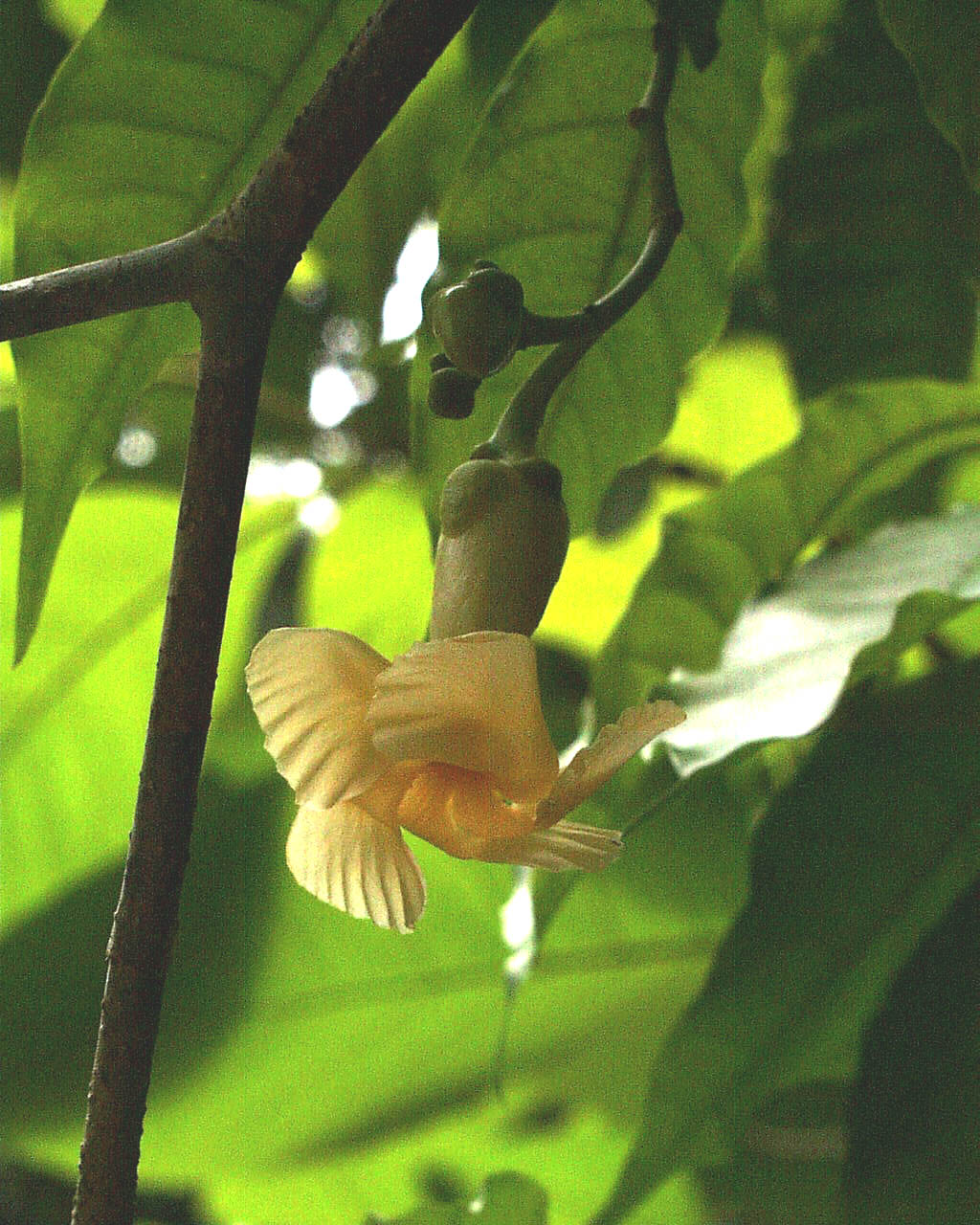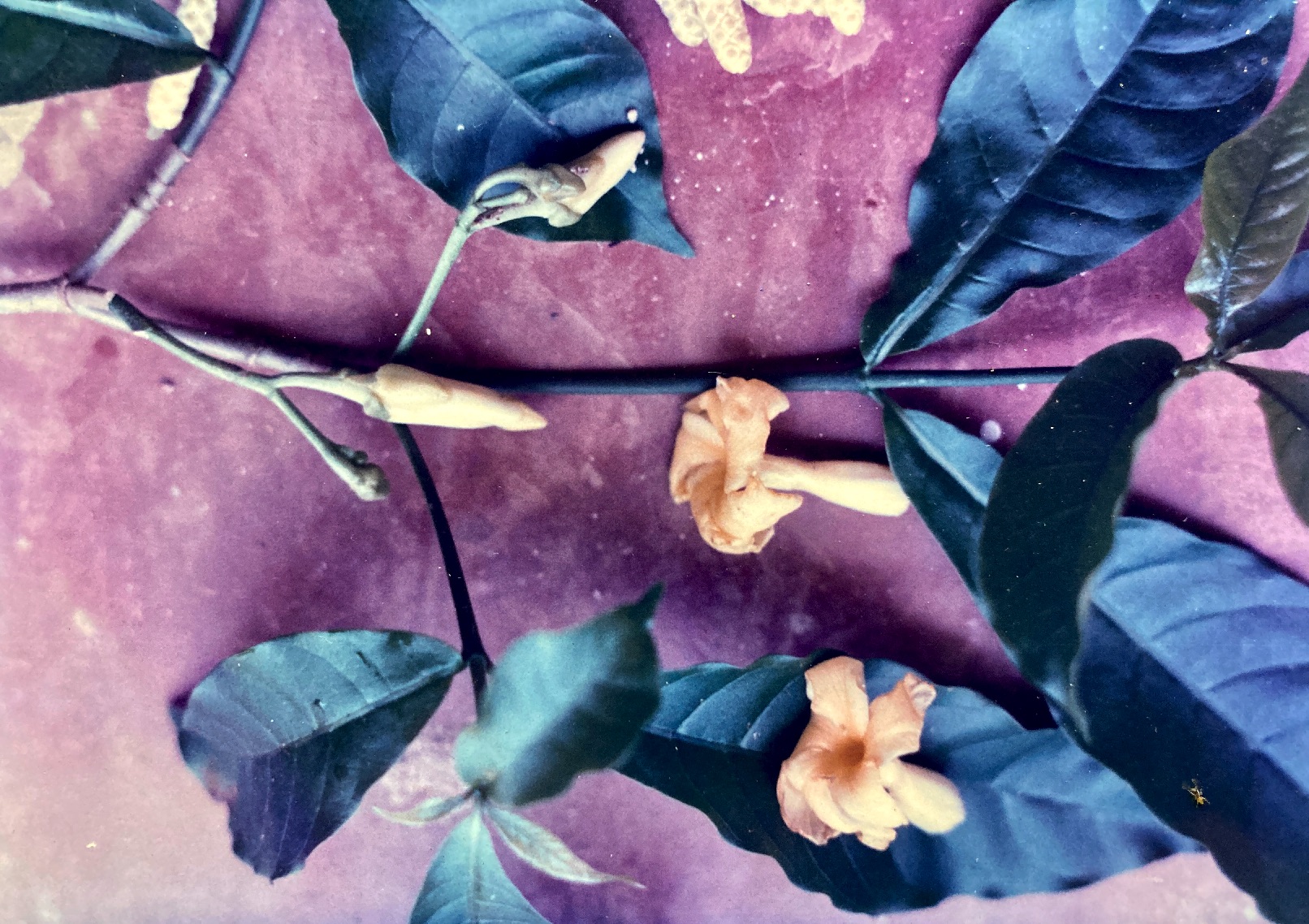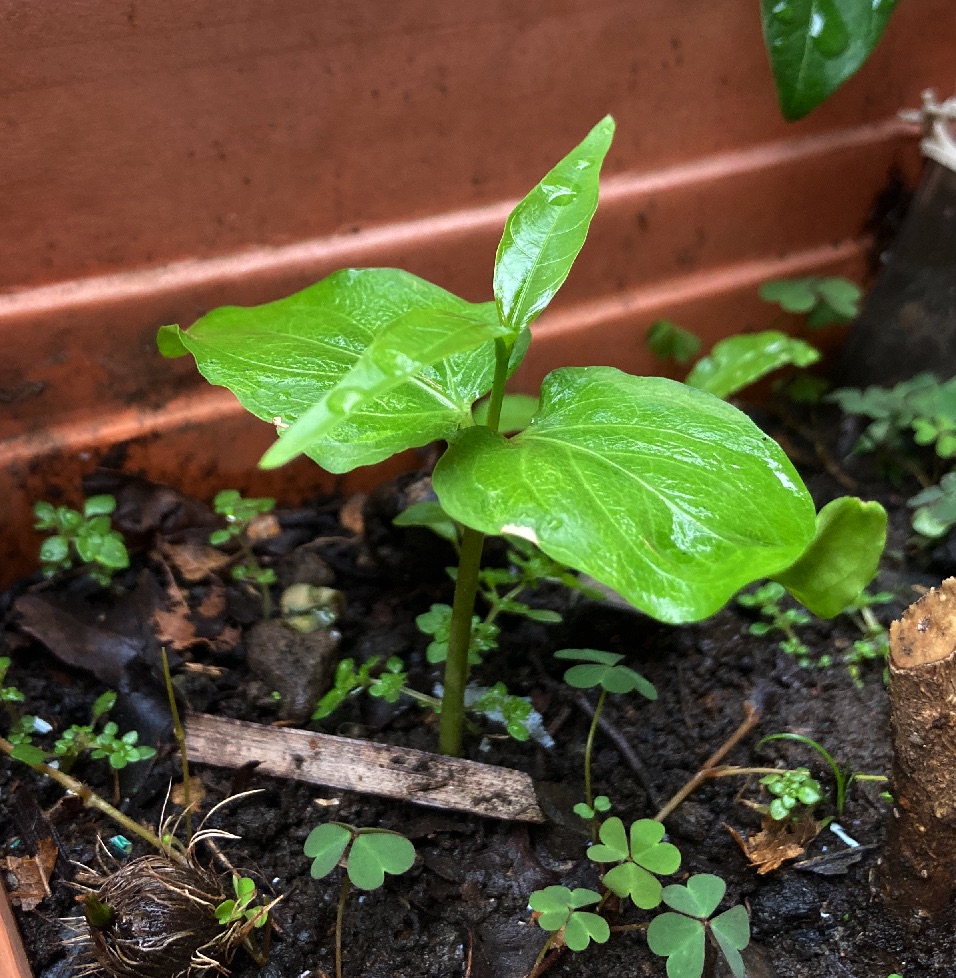Stemmadenia donnell-smithii (Rose) Woodson
Apocynaceae HUEVOS DE CABALLO
Tree: Occasional evergreen understory tree (10-15 m) preferring humid sites such as those typical of low lying bottomlands and streamsides. A resident of the darker lower levels of the dense, primary forest, Huevo de Caballo may nevertheless be found in direct sunlight along woodland edges as well. Its colorful common name comes from the shape and nature of the large, paired, hanging fruits it produces annually – a characteristic this tree shares with several other closely related species of the same genus found in Costa Rica and elsewhere in the Neotropics.
Description: Though never very large, Stemmadenia‘s trunk (25 cm) is straight and cylindrical. The bark is thin, smooth, brown, and textured with many raised, point lenticels. Abundant latex, thick and white, is exuded by the wounded bark, branches, and twigs. Long, flexible limbs leave the main trunk at essentially all levels. Extending outwards, they initially arc upwards, eventually drooping under the combined weight of foliage and fruits. The crown they form is narrow and moderately dense. Huevo de Caballo leaves (15 by 5 cm) are simple, opposite, dark green and glossy. Of overall elliptical shape, the blades have prominent drip tips and narrow, long-tapering (cuneate) bases. They are also thin and mostly smooth, exhibiting pubescence only in the axils of the inferior leaf veins. Leaves are shed – often entirely – and regenerated during the month of March.
Large, pale yellow flowers (5 cm by 3 cm) are borne from leaf axils in clusters of about three blossoms each. Each is composed of a narrow corolla tube that flares outward, trumpet-style, into five spirally arranged petals. An equal number of pale green or white, scaly sepals completes the perianth. Blossoms appear over an extended period, lasting from late February until the end of November – only ceasing for a couple of months during the early portion of the dry season.
The first few small fruits do not become visible in the crowns until about August and they continue to accumulate and increase in size until the end of the flowering season. With the earliest reaching full size (11 cm) by January, the heavy fruits mature as green, paired, asymmetrically curved capsules bearing a longitudinal seam along their inferior margin. Eventually, they split open along that seam and expose a hundred or so small seeds (4 mm), each covered with a striking, bright-orange aril. Fruition lasts from mid-March until late June.
Similar Species: Huevo de Caballo may best be distinguished by locating the large and showy flowers and/or fruits that are its hallmark. Fertile nearly year round, at least one of these structures can be found in some stage of development during any season.
Natural History: Pollination of Huevo de Caballo flowers occurs through the action of the moths, butterflies, bees, and other insects that visit them. Small birds like Vireos (Stiles & Skutch, 1989) and Honeycreepers eat the fruit arils, as do white-faced monkeys (Foster & McDiarmid, 1983). Stemmadenia arils are reported to be oily, highly nutritious and good sources of energy (Foster & McDiarmid).
Uses: The thick white sap of fruits and stems is sticky and has been used both as glue (e.g. for cigarette wrappers (Allen, 1956) and for chewing gum (Witsberger, 1982).
Distribution: This tree his is known from Manuel Antonio, Carara, Punta Leona, Curu, Corcovado, Cabo Blanco, and the western end of the Central Valley (Rodeo area) – doubtless it occurs in many other areas along the wet and dry sections of the Pacific coastal slope. It ranges from southern Mexico to Panama (Witsberger, 1982).




